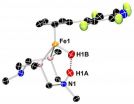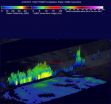(Press-News.org) Sequencing an entire human genome is faster and cheaper than ever before, leading to an explosion of studies comparing the genomes of people with and without a given disease. Often clinicians and researchers studying genetic contributions to a certain disease encounter variations that appear to be responsible, only to find other people with the same mutation who don't have the disease or who are affected to a lesser degree.
How do doctors pinpoint the genetic changes that really cause disease? An open-access policy paper to be published Wednesday in Nature proposes guidelines for researchers studying the effects of rare genetic variants. The recommendations focus on several key areas, such as study design, gene- and variant-level implication, databases and implications for diagnosis.
Co-author Chris Gunter, PhD, associate director of research at Marcus Autism Center and associate professor of pediatrics at Emory, is one of the organizers of the 2012 workshop of leading genomics researchers, sponsored by the National Human Genome Research Institute, that led to the paper.
"Several of us had noticed that studies were coming out with wrong conclusions about the relationship between a specific sequence and disease, and we were extremely concerned that this would translate into inappropriate clinical decisions," she says.
Potentially, based on flawed results, physicians could order additional testing or treatments that are not truly supported by a link between a genetic variant and disease, and this paper could help prevent such inappropriate decisions, Gunter says.
The group of 27 researchers proposes two steps for claiming that a genetic variation causes disease: detailed statistical analysis followed by an assessment of evidence from all sources supporting a role for the variant in that specific disease or condition. In addition, they highlight priorities for research and infrastructure development, including added incentives for researchers to share genetic and clinical data.
One case cited in the paper relates to autism. Researchers found four independent variations in a gene called TTN when they compared genomes between individuals with and without autism. However, the TTN gene encodes a muscle protein (titin) that is the largest known; variations are simply more likely to be found within its boundaries compared to those of other genes. Without applying the proper statistical corrections, researchers may have falsely concluded that TTN was worthy of further investigation in autism studies.
The authors note that many DNA variants "may suggest a potentially convincing story about how the variant may influence the trait," but few will actually have causal effects. Thus, using evidence-based guidelines such as the ones in the Nature paper will be crucial.
"We believe that these guidelines will be particularly useful to scientists and clinicians in other areas who want to do human genomic studies, and need a defined starting point for investigating genetic effects, " Gunter says.
INFORMATION:
Quality control guidelines for genomics studies
NHGRI-sponsored workshop for genomics researchers led to proposal for statistical and evidence standards
2014-04-23
ELSE PRESS RELEASES FROM THIS DATE:
Picky male black widow spiders prefer well-fed virgins
2014-04-23
New University of Toronto Scarborough research shows that male black widow spiders prefer their female mates to be well-fed virgins – a rare example of mate preference by male spiders.
The study, authored by UTSC post-doc Emily MacLeod and Maydianne Andrade, a professor in UTSC's Department of Biological Sciences, found in both controlled field studies and the wild that males overwhelmingly chose to mate with well-fed, unmated females. They also found male black widows can tell whether a potential mate is well-fed and unmated by pheromones released by females.
"This ...
Halving hydrogen
2014-04-23
RICHLAND, Wash. -- Like a hungry diner ripping open a dinner roll, a fuel cell catalyst that converts hydrogen into electricity must tear open a hydrogen molecule. Now researchers have captured a view of such a catalyst holding onto the two halves of its hydrogen feast. The view confirms previous hypotheses and provides insight into how to make the catalyst work better for alternative energy uses.
This study is the first time scientists have shown precisely where the hydrogen halves end up in the structure of a molecular catalyst that breaks down hydrogen, the team reported ...
Increased infrastructure required for effective oil spill response in US Arctic
2014-04-23
WASHINGTON – A changing climate is increasing the accessibility of U.S. Arctic waters to commercial activities such as shipping, oil and gas development, and tourism, raising concern about the risk of oil spills. A new report from the National Research Council says that a full suite of proven oil response tools is needed to address potential oil spills in U.S. Arctic waters, but not all of them are readily available. While much is known about both oil behavior and response technologies in ice-covered environments, there are areas where additional research would enable ...
On the defensive
2014-04-23
People diagnosed with Huntington's disease, most in their mid-thirties and forties, face a devastating prognosis: complete mental, physical, and behavioral decline within two decades. "Mutant" protein clusters, long blamed for the progression of the genetic disease, have been the primary focus of therapies in development by pharmaceutical companies. But according to new research from Prof. Gerardo Lederkremer and Dr. Julia Leitman of Tel Aviv University's Department of Cell Research and Immunology, in collaboration with Prof. Ulrich Hartl of the Max Planck Institute for ...
ASTRO issues guideline on the role of postoperative radiation therapy for endometrial cancer
2014-04-23
Fairfax, Va., April 23, 2014— The American Society for Radiation Oncology (ASTRO) has issued a new guideline, "The Role of Postoperative Radiation Therapy for Endometrial Cancer: An ASTRO Evidence-Based Guideline," that details the use of adjuvant radiation therapy in the treatment of endometrial cancer. The guideline's executive summary is published in the May-June 2014 issue of Practical Radiation Oncology (PRO), the official clinical practice journal of ASTRO. The full-length guideline is available as an open-access article online at http://www.practicalradonc.org.
ASTRO's ...
Conservation priorities released for several protected areas along US-Mexico border
2014-04-23
This news release is available in French and Spanish.
Montreal, 23 April 2014—Today, the CEC released its Conservation Assessment for the Big Bend-Río Bravo Region: A Binational Collaborative Approach to Conservation, which identifies 29 priority conservation areas in a region straddling the United States-Mexico border that includes 11 different protected areas in the states of Texas, Coahuila, and Chihuahua. This region features unique, highly diverse arid and semi-arid habitats inhabited by rare and endangered plants and animals, and provides a vital migratory ...
Novel compound halts cocaine addiction and relapse behaviors
2014-04-23
BUFFALO, N.Y. – A novel compound that targets an important brain receptor has a dramatic effect against a host of cocaine addiction behaviors, including relapse behavior, a University at Buffalo animal study has found.
The research provides strong evidence that this may be a novel lead compound for treating cocaine addiction, for which no effective medications exist.
The UB research was published as an online preview article in Neuropsychopharmacology last week.
In the study, the compound, RO5263397, severely blunted a broad range of cocaine addiction behaviors.
"This ...
NASA sees last vestiges of Tropical Depression Jack
2014-04-23
Tropical Cyclone Jack had weakened to a tropical depression when NASA and JAXA's Tropical Rainfall Measuring Mission (TRMM) satellite passed above on April 22, 2014 at 1120 UTC/7:20 a.m. EDT.
At that time, TRMM found that Jack was devoid of almost all rainfall near the tropical cyclone's center. Outside the center was a different story, however. That's where TRMM's precipitation radar instrument found rain falling at a rate of over 130mm/hr (about 5.1 inches) in a band of thunderstorms that stretched from east of Jack's center to the south. Some of the thunderstorms even ...
EARTH Magazine: Faking quakes at full scale
2014-04-23
Alexandria, Va. – On a muggy day in mid-July 2009, a lone seven-story condominium complex northwest of Kobe, Japan, was violently shaken by an earthquake. Onlookers watched the 23-unit, wood-frame tower sway and bounce while, inside the building, furniture toppled and plates clattered to the floor. No one was hurt during the highly localized event and there was only minimal damage, in part because the building's wooden skeleton had been augmented to better resist earthquake shaking, but also because the whole event — from the seismicity to the partially furnished building ...
Some astronauts at risk for cognitive impairment, animal studies suggest
2014-04-23
Johns Hopkins scientists report that rats exposed to high-energy particles, simulating conditions astronauts would face on a long-term deep space mission, show lapses in attention and slower reaction times, even when the radiation exposure is in extremely low dose ranges.
The cognitive impairments — which affected a large subset, but far from all, of the animals — appear to be linked to protein changes in the brain, the scientists say. The findings, if found to hold true in humans, suggest it may be possible to develop a biological marker to predict sensitivity to radiation's ...
LAST 30 PRESS RELEASES:
HKUST Engineering researchers developed a novel photodetector to enhance the performance of on-chip light monitoring
Strategic river sensors could have forewarned of Texas Camp flood disaster
Drone sampling of whale breath reveals first evidence of potentially deadly virus in Arctic
Roman soldiers defending Hadrian’s Wall infected by parasites, study finds
Pinochet’s prisoners were tormented with music but still found solace in it, a new book reveals
Fertility remains high in rural Tanzania despite access to family planning
AI-assisted device can improve autism care access
Kinetic careers
Uncovering how parasitic plants avoid attacking themselves to improve crop resistance
Nanoparticle vaccine strategy could protect against Ebola and other deadly filoviruses
Study finds brain care score can predict risk of stroke across racial groups
Key lung immune cells can intensify allergic reactions
Do hormones explain why women experience more gut pain?
New materials conduct ions in solids as easily as in liquids
Breakthrough of the Year: Renewable energy begins to eclipse fossil fuel-based sources
LLM use is reshaping scientific enterprise by increasing output, reducing quality and more
Introducing LightGen, a chip for ultra-fast, ultra-efficient generative AI
Astronomers see fireworks from violent collisions around nearby star
ACC/AHA issue new guideline on managing congenital heart disease in adults
Cosmic crash caught on camera
Is talented youth nurtured the wrong way? New study shows: top performers develop differently than assumed
Ants: An untapped resource in the development of antibiotics?
Archaeologists use AI to create prehistoric video game
Mitochondria migrate toward the cell membrane in response to high glucose levels
Tiny viral switch offers hope against drug-resistant bacteria
Most parents aware of early peanut introduction guidelines, but confused about details
HPV vaccine can protect against severe lesions of the vulva and vagina
Virtual care provision and emergency department use among children and youth
Quadrivalent HPV vaccine and high-grade vulvovaginal lesions
Insights into dry eyes gained from stem cell-derived tear glands
[Press-News.org] Quality control guidelines for genomics studiesNHGRI-sponsored workshop for genomics researchers led to proposal for statistical and evidence standards




